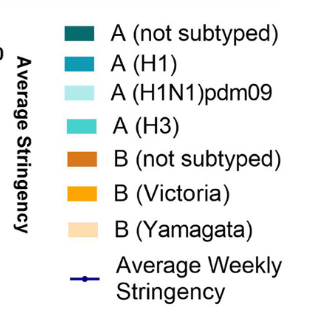ABSTRACT
Introduction of non-pharmaceutical interventions to control COVID-19 in early 2020 coincided with a global decrease in active influenza circulation. However, between July and November 2020, an influenza A(H3N2) epidemic occurred in Cambodia and in other neighboring countries in the Greater Mekong Subregion in Southeast Asia. We characterized the genetic and antigenic evolution of A(H3N2) in Cambodia and found that the 2020 epidemic comprised genetically and antigenically similar viruses of Clade3C2a1b/131K/94N, but they were distinct from the WHO recommended influenza A(H3N2) vaccine virus components for 2020-2021 Northern Hemisphere season. Phylogenetic analysis revealed multiple virus migration events between Cambodia and bordering countries, with Laos PDR and Vietnam also reporting similar A(H3N2) epidemics immediately following the Cambodia outbreak: however, there was limited circulation of these viruses elsewhere globally. In February 2021, a virus from the Cambodian outbreak was recommended by WHO as the prototype virus for inclusion in the 2021-2022 Northern Hemisphere influenza vaccine.
